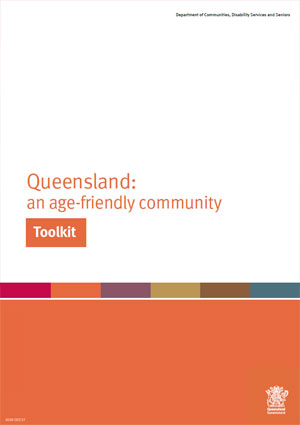Business self-assessment tool
(adapted from Age-friendly Business in British Columbia)
How does your business stack up?
Please score your business in the text boxes below. Skip questions that do not apply.
Safety: Consider people with reduced mobility, agility, and balance
Outside space: access to your business is free of hazards
- Pick-up/drop-off areas are convenient, sheltered and clearly marked.
- Footpath access from transit stop and parking areas is level and well maintained, with curb cuts where needed.
- Footpaths and carparks are well and evenly lit.
- Accessible and seniors’ parking spaces are designated and enforced.
- Carparks and footpaths are promptly cleared of wet leaves, puddles and other hazards (including paths from carpark to footpath).
- Parking ticket machines have clear instructions and large print.
- Pavements are smooth, without cracks or dips and bumps.
- Entrances are kept clear of street furniture and other obstructions (such as tied-up dogs and clutter).
- Entrance doors open automatically or have access buttons; they stay open for long enough to get through.
- Buildings have at least one level entrance, with the threshold flush to the door.
- Doors are wide enough for wheelchairs.
- There is clearance by the door for a person waiting with a wheelchair or walker.
- Wheelchair access routes are well marked.
Inside space: customers can navigate without obstructions and distraction
- Stairways have sturdy handrails on both sides.
- Stair edges are clearly marked.
- Flooring is non-slip and non-shiny.
- Necessary mats are securely fastened.
- Lifts to other floors are available and there are ramps for changes of level.
- Obstacles or hazards are clearly marked (e.g. step up, step down, automatic door, wet floor).
- Aisles are wide enough for two walkers or wheelchairs (approx. 1.4m), and uncluttered by displays.
- Location of lifts, bathrooms, customer service and other amenities and services are clearly posted; a store layout map is visible near the entrance.
- Most-popular items are shelved at medium height.
- Staff training about emergencies (warning and evacuation) includes consideration of older people and people with disability.
Comfort: Consider customers with reduced mobility, agility and balance
Provide for people with limited strength and stamina
- Sturdy, regular-height seating is placed in waiting or line-up areas.
- At least one service or checkout counter is accessible for customers in wheelchairs.
- Service counters have a place on which to hook a cane so it doesn’t fall.
- There is a space by the entrance for customers to park scooters.
- In areas where customers sit for some time (e.g. restaurant tables), temperature is held at comfortable levels with no chilly air currents.
- An online or phone-in ordering/delivery service is available.
- Telephone has large-print buttons and amplification capabilities.
- Customer bathrooms are available.
- Bathrooms contain at least one accessible toilet cubicle and hand-washing area.
- Customers are offered assistance when taking items to their car.
Provide for people with poor sight or hearing
- Premises are well and evenly lit.
- Signage has legible fonts and good contrast (e.g. black on white).
- Printed or written materials (e.g. package labels, cash receipts and restaurant bills) have good contrast and readable font sizes.
- Staff speak clearly and at an appropriate speed, while looking directly at the person.
- Some staff are trained to assist customers who have vision or hearing challenges (e.g. reading labels and locating items).
- Sound systems for public announcements are loud enough, distortion free and not overused.
- A quiet space is provided for discussing private business such as medications or finances; staff are trained to move to those areas when necessary.
- The font sizes on your website can be increased.
- The website is easy to navigate.
- Background music is absent or low in volume.
Respect: Ensure all customers are treated with respect
- Staff are trained to be friendly and patient with all customers and try to meet their needs.
- Staff are aware of avoiding condescending behaviours (e.g. speaking too loudly, speaking too familiarly —as in calling someone "dear" — or demonstrating impatience).
- Staff are encouraged to move to an area where they can more comfortably serve someone who may have trouble seeing, hearing, understanding or making their requests known.
- Errors and customer complaints are addressed promptly and courteously.
- Staff are trained in how to manage situations, such as a fall or an outburst, while preserving a person’s dignity.
- Staff can identify if a person is experiencing a medical emergency and can notify the appropriate service or authority.
A few extras that will increase the attractiveness of your business for older customers
- Promotional material includes depictions of older people.
- Consumer research includes older people.
- Products and services are designed to include options for smaller households, smaller incomes and smaller appetites.
Your business scores
Resources available
Printable versions of this resource and many others are available for download in the Queensland: an age-friendly community toolkit.
- Last reviewed
- 4 August 2023
- Last modified
- 4 August 2023
 This work is licensed under a Creative Commons Attribution 4.0 International (CC BY 4.0) licence
This work is licensed under a Creative Commons Attribution 4.0 International (CC BY 4.0) licence


